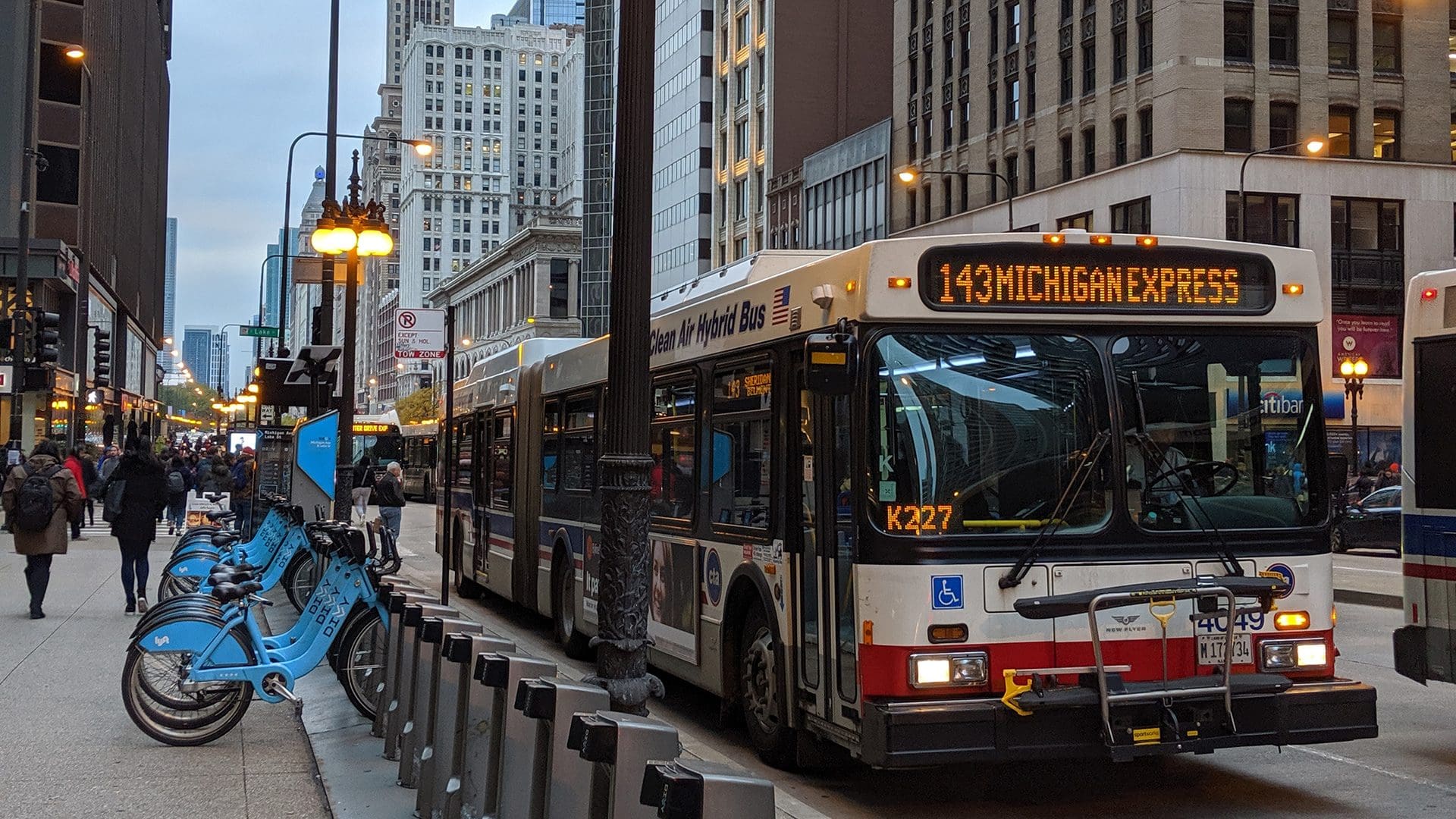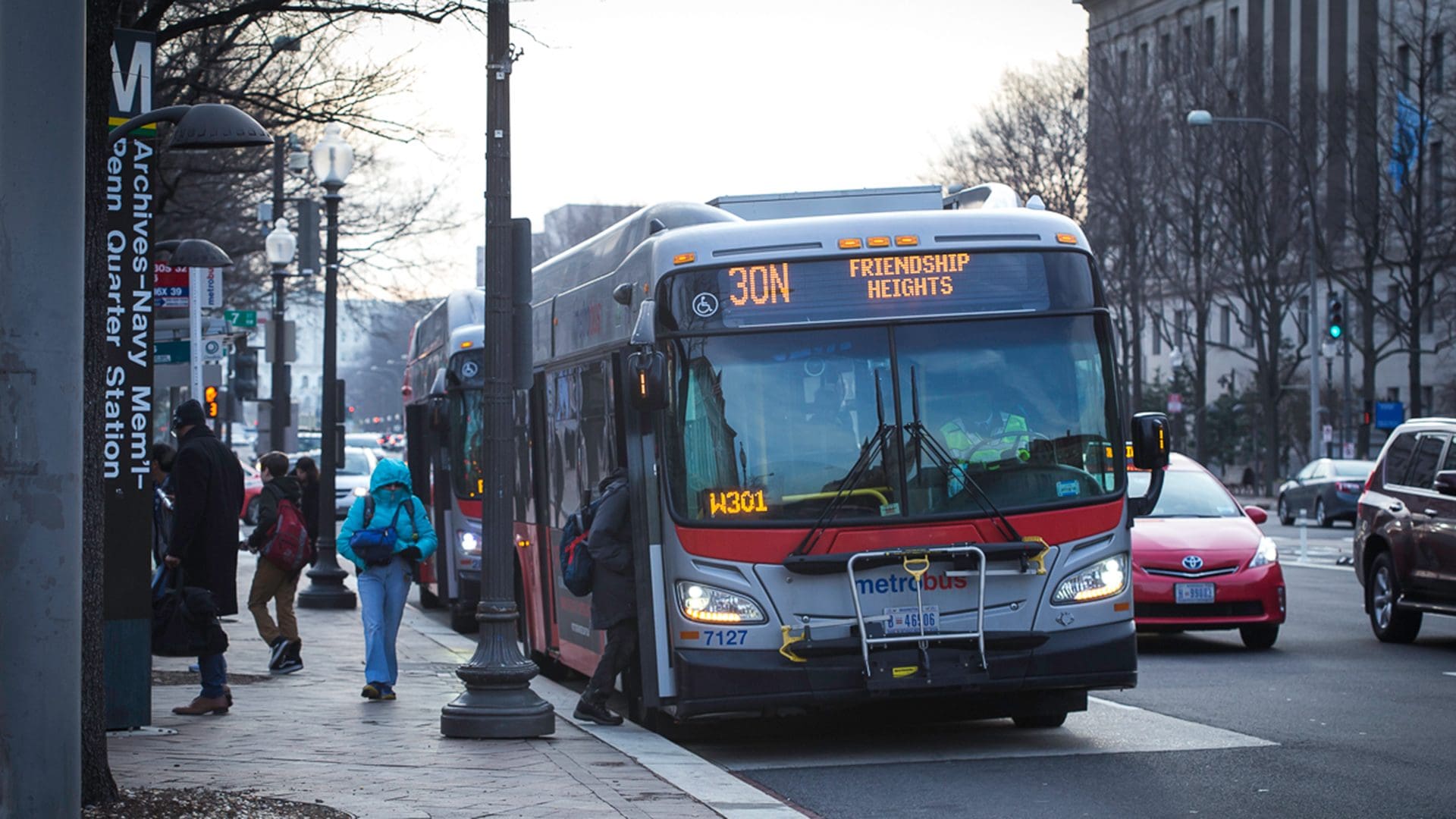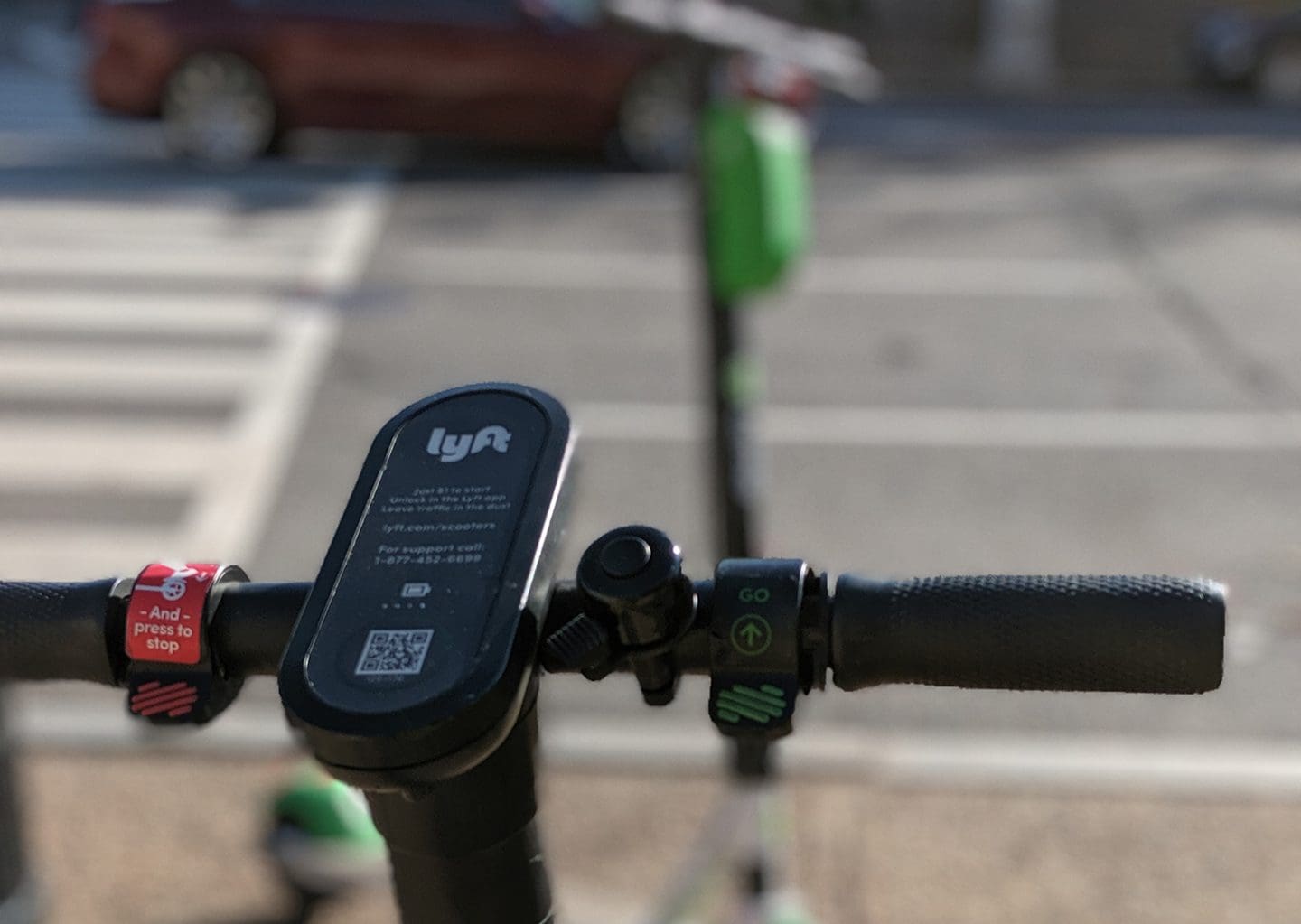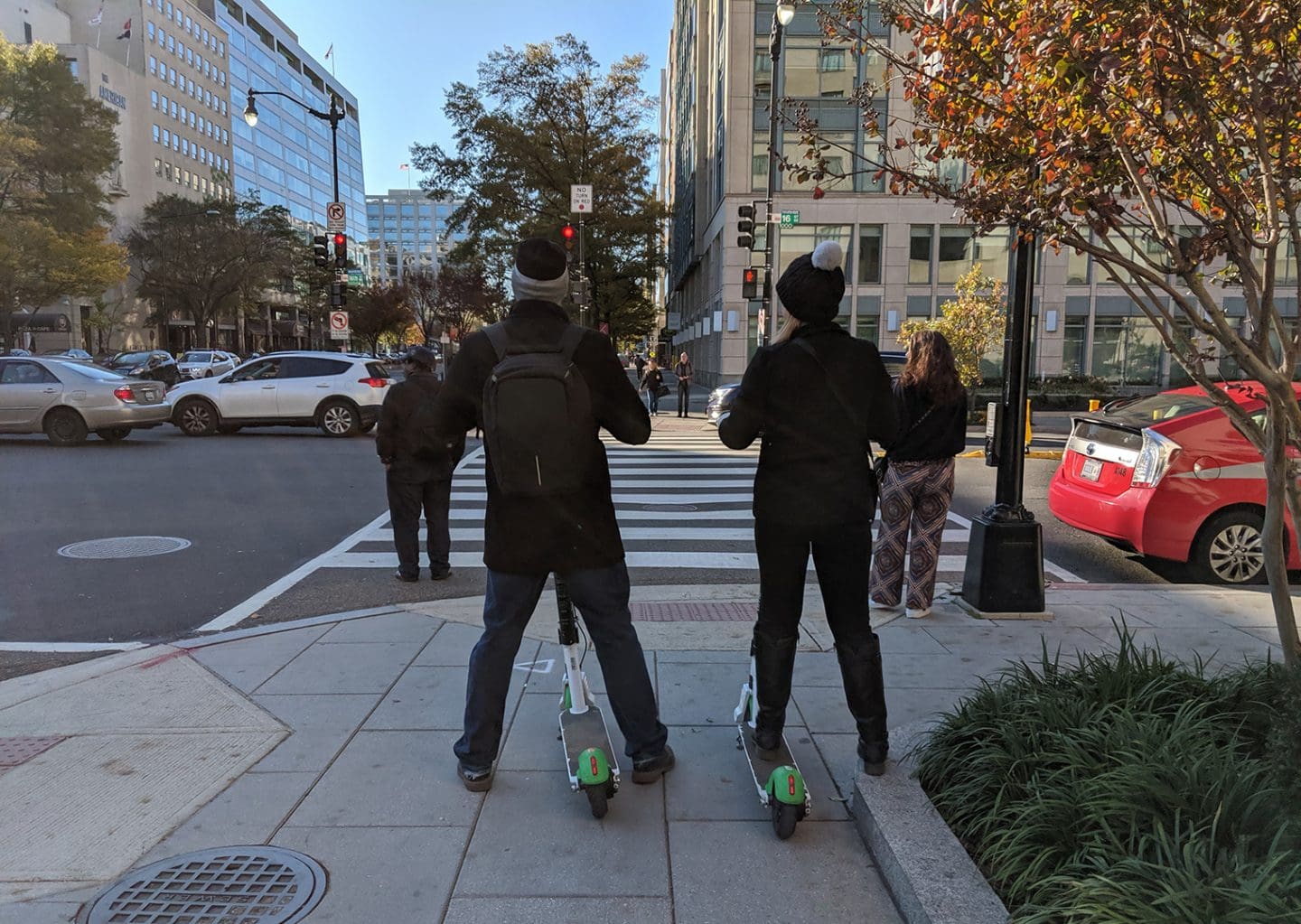November 18, 2019
Remember the “transit stores” of old? (Well… of a few years ago.)
Schedules would be stacked on one wall and people selling fare cards would be at the front of the room. Remember leafing through the stack of schedules and then standing in line to purchase your farecard?
Fast forward to 2019. It’s a breezy Thursday morning in Chicago, and you’ve got to get across town for a meeting.
You open the Transit app, which provides you with real-time arrival and departure information for buses and trains. It also shows you where the nearest Divvy bikeshare stations are, where you can pick up the closest e-scooter, and how many minutes away the nearest rideshare vehicle is.
You determine the L train is the most efficient way to your meeting location. You head to the nearby station and pull out your Ventra card to pay the L train fare with a quick scan. Your Ventra balance is getting low, but that is not a problem, because it is connected to your bank account and will automatically reload.
Compare that user experience – finding everything you needed on your phone – to the time and complexity of waiting in line at the ticket counter just a handful of years ago. The development and widespread use of Ventra and the Transit app in Chicago marks a growing trend to offer cashless public transit fare options and combine mobilities in digital hubs. Cashless fares take a lot of the friction out of transit travel.
There’s more to the story, however.
What if you didn’t have any data left in your phone plan that day? What if your phone died while you were trying to select your mode of transportation? What if you didn’t have a reliable banking service that would reload the card for you?
Or, what if you didn’t have a smartphone at all – and the closest place to reload your Ventra card wasn’t safely walkable from where you started?
A balanced approach is essential when examining the topic of cashless public transportation fares because core equity issues are on the line. Read on and we’ll explain more.

The Transit app in Chicago provides you with real-time arrival and departure information for buses and trains. It also shows you where the nearest Divvy bikeshare stations are, where you can pick up the closest e-scooter, and how many minutes away the nearest rideshare vehicle is.
The Benefits of a Cashless Public Transit System
Primary Objective: Speed of Boarding
The numbers show that cashless systems, in which transit users scan a card or phone, move passengers more quickly through a transit system.
A framework for measuring transit availability, comfort, and convenience is provided as part of the 3rd edition of the Transit Capacity and Quality of Service Manual. In chapter three, the manual reports average passenger service time with different fare types, measured in seconds per person.
| Fare Collection System | Average Boarding TIme | Suggested Default Boarding Time |
| Putting exact change into a farebox | 2.9-5.1 seconds | 4.5 seconds/passenger |
| Using a smart card | 2.5-3.2 seconds | 2.75 seconds/passenger |
| Visual inspection (paper transfer, flash pass, or mobile phone) | 1.6-2.6 seconds | 1.75 seconds/passenger |
That means compared to putting change into a farebox, a smart card cuts boarding time exactly in half, and mobile phone inspection cuts it down even further.
This has big implications for passenger throughput. Boarding time can be used to estimate dwell time, which has tremendous impact on the overall route cycle. Changes in fare collection methods and the vehicle-platform interface have a ripple effect on the route as a whole.

Changing fare collection methods and the vehicle platform interface has a ripple effect on the whole route cycle.
Other benefits to cashless fare options include:
- Data Collection – Digital fare collection means transit agencies can collect more ridership data, assisting agencies in transit service planning. We can analyze how boardings differ by time of day or day of week, on each route, by type of rider. The data tells us if the frequency of transit differs between riders with monthly passes and riders paying on an individual trip basis, and can be used to create other tools that support transportation planning efforts.
- Incentivizing Travel Behavior and Allowing Dynamic Pricing Strategies – Cashless systems offer the potential to offer discounts or incentives to riders to avoid using systems during peak hours of operation. For example, a pilot program in Chicago looked to minimize the impacts of Cubs games on peak hour Red Line operations by offering participating riders a discounted fare on their Ventra cards if they were willing to use the Red Line in the off-peak. Such real-time incentives would be difficult to implement using traditional cash fares.
- Seamless Use Across Multiple Systems – Chicago’s Ventra system is also an example of a cashless fare system that extends across several modes. With the purchase of a Ventra card, people in Chicago have a single way to pay for bus and train service Chicago Transit Authority (CTA), suburban bus service Pace, and commuter railroad Metra all from the same payment system. Passengers board with the quick scan of the Ventra card or tap of the mobile app. This can offer advantages to travelers as well, one of which is free transfers. In Portland, one swipe of a HopCard grants a passenger transit access for 2.5 hours, which covers the Metropolitan Area Express (MAX) light rail and the bus system.
The Drawbacks of a Cashless Public Transit System
Primary Issue: Equity
Even though market penetration of smartphones continues to increase, smartphones are not owned by 100% of transportation network users, and not everyone who owns a smartphone has an active data plan.
Mobility Lab cites the Cashless Retailers Prohibition Act of 2018, a bill that would prohibit retailers from not accepting cash or charging different prices depending on the form of payment used. The bill claims that cashless businesses effectively discriminate against people with low incomes.
Similar to a cashless business, a cashless fare system poses challenges for the unbanked.
"Roughly 7% of the American population does not have a bank account, according to FDIC's 2017 National Survey of Unbanked and Underbanked Americans, meaning they lack checking or savings accounts. Individuals and families with lower incomes and less education are less likely to have cards, as are Black and Hispanic Americans."
- Ella Chochrek, Footwear News
In addition to “unbanked,” according to a survey by the Federal Deposit Insurance Corp., 25% of the population is underbanked, meaning they could have limited access to credit cards or digital payment systems.
Going back to Chicago, if Ventra did not also offer the option to load a card at a kiosk accepting cash, up to 25% of the population would face barriers to adding money to their account – and this would disproportionately impact people of color.
A cashless system also poses challenges for the elderly. While twice as many seniors own smartphones today as they did in 2013, that is still only four in ten, Pew Research reported in 2017. Every new technology needs to be released with considerations about the ease of adapting to it.
CBS News adds additional considerations: victims of domestic violence who want to sever ties with their partners (which could include bank accounts), or individuals with fluctuating incomes, might be penalized by a cashless system.
Other potential issues include:
- Technology Glitches – Even if a user owns a smartphone with data, there may be issues with its performance at the critical moment. What happens if the phone freezes or loses battery while being inspected? The “dog ate my homework” of 2019 is “my phone glitched.” When technology does not cooperate, we can’t quickly determine whether or not someone paid the fare.
- Distribution of Cards – Even if cash can be used to load a transit card, if cards can only be obtained or reloaded in certain areas, this poses inconveniences to those whose only option to reload the card is with cash. It may also pose safety concerns if people have to travel long or unsafe distances to reload their cards because they don’t have the option to do so digitally.
- Privacy Concerns – While cashless systems do offer convenience, care must be taken to ensure that Personally Identifiable Information (PII) is handled properly so that passenger information does not fall into the wrong hands.
- Not Intuitive for Visitors – While less of a core equity issue, cashless fare systems can serve as a barrier to entry for people visiting a city for the first time. Many of us can relate to getting off a plane and wondering what app, card, or other system we need to learn in order to board the train out of the airport. Recently, I (Gibran) visited a city in which I didn’t have the transit app downloaded. So that I wouldn’t miss the bus, I ran into a convenience store, bought a stamp, and used the change to pay my bus fare. The available cash option saved me from arriving at my destination 15 minutes late.
Offering Balanced Perspectives
These benefits and drawbacks point us to the reality that there is always more than one perspective to consider. We can’t get so far ahead of ourselves that we overlook who might be negatively impacted by each transportation technology or service in question.
The trends of digital fares and extensions across modes will continue. So what do we do with this information?
As transportation consultants, we should never stray from first understanding what a community, and by extension our client, fundamentally needs. What are they doing now? How is it working for them? What are they trying to accomplish?
Agencies look to consultants to provide balanced and trustworthy advice about the pros and cons. Thoughtful consultants should consider the following:
- Encouraging our clients to communicate to their communities the options they have and, in some cases, the options that exist that make public transit a more efficient and affordable way to get around.
- Being candid about the equity concerns and having honest conversations, taking into account which stakeholders need to be part of the process.
- Going back to research to measure level and quality of service against the factors we know are most important to transit users.
- Keeping our finger on the pulse to be able to advise, even before all questions are answered, what big-picture decisions need to be made to account for rapidly changing technologies and services.


In August 2019, Google Maps added Lime scooters as transportation options in more than 100 cities. Clicking on the bouncing green light sends the user to a QR code to use a scooter.
The Future of Mobility as a Service
As Mobility as a Service (MaaS) continues to evolve, there will be more players in the market who have a vested interest in fare systems. MasterCard is one. In May 2019, they announced a partnership with Kisio aimed at simplifying transportation apps. MasterCard understands the advantage of offering customers as much choice and service as possible to maximize the number of transactions made with a MasterCard, and the amount of data they can collect on their customers, so that they can develop more tailored offerings.
In August 2019, Google Maps added Lime scooters as transportation options in more than 100 cities. Clicking on the bouncing green light sends the user to a QR code to use a scooter. This is an example of how cashless payment integrates with other elements of a MaaS strategy – by giving transit users all the information they need in one seamless experience, we make it more likely that they will be willing to use the system.
Ride-hailing companies like Uber and Lyft continue to explore integration with public transit (and vice versa). In Orlando, Uber partnered with Altamonte Springs, Lake Mary, Longwood, Maitland and Sanford in a pilot program through which the partner cities paid 20 percent of fares that started and ended within the partner city limits, and 25% off fares for trips to a local SunRail commuter train station. The program generated more than 186,148 local rides. A few hours away in Pinellas County, through a program called “Direct Connect,” Uber riders swipe to a special screen in their app to transfer to a bus for free from their Uber ride. The county is also giving $5 breaks to Uber or taxi rides to specified public transit stops.
As these trends continue, we must consider how we can not only identify and avoid equity issues through the movement away from cash fare systems and toward MaaS, but to use them to increase equity. Digital or card-based fares give transit agencies the opportunity to benefit seniors, riders with disabilities, and low-income riders through reduced rate cards, providing all groups have safe and convenient access to load money onto the card.
There is much more to talk about when it comes to this topic. Please reach out to us to discuss further!
————————————————————————
It All Goes Back to Research
Kittelson’s Paul Ryus is the primary author of the Transit Capacity and Quality of Service Manual, which serves as a guide to measuring transit availability, comfort, and convenience from the passenger and transit provider points of view. For more information, visit http://www.trb.org/Main/Blurbs/169437.aspx.
